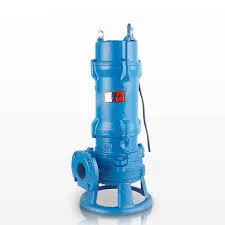English
- Afrikaans
- Albanian
- Amharic
- Arabic
- Armenian
- Azerbaijani
- Basque
- Belarusian
- Bengali
- Bosnian
- Bulgarian
- Catalan
- Cebuano
- Corsican
- Croatian
- Czech
- Danish
- Dutch
- English
- Esperanto
- Estonian
- Finnish
- French
- Frisian
- Galician
- Georgian
- German
- Greek
- Gujarati
- Haitian Creole
- hausa
- hawaiian
- Hebrew
- Hindi
- Miao
- Hungarian
- Icelandic
- igbo
- Indonesian
- irish
- Italian
- Japanese
- Javanese
- Kannada
- kazakh
- Khmer
- Rwandese
- Korean
- Kurdish
- Kyrgyz
- Lao
- Latin
- Latvian
- Lithuanian
- Luxembourgish
- Macedonian
- Malgashi
- Malay
- Malayalam
- Maltese
- Maori
- Marathi
- Mongolian
- Myanmar
- Nepali
- Norwegian
- Norwegian
- Occitan
- Pashto
- Persian
- Polish
- Portuguese
- Punjabi
- Romanian
- Russian
- Samoan
- Scottish Gaelic
- Serbian
- Sesotho
- Shona
- Sindhi
- Sinhala
- Slovak
- Slovenian
- Somali
- Spanish
- Sundanese
- Swahili
- Swedish
- Tagalog
- Tajik
- Tamil
- Tatar
- Telugu
- Thai
- Turkish
- Turkmen
- Ukrainian
- Urdu
- Uighur
- Uzbek
- Vietnamese
- Welsh
- Bantu
- Yiddish
- Yoruba
- Zulu
Telephone: +86 13120555503
Email: frank@cypump.com
Nov . 09, 2024 22:51 Back to list
Efficient Solutions for Wastewater Lift Pump Systems and Their Applications
Understanding Sewage Lift Pumps Essential Components of Wastewater Management
Sewage lift pumps, often referred to as sewage pumps or lift stations, are critical components in the process of wastewater management. These pumps play an essential role in the transportation of sewage from lower to higher elevation points, ensuring that waste is effectively moved to treatment facilities for processing and disposal. Given the increasing urbanization and population growth, the importance of sewage lift pumps has never been more pronounced.
What is a Sewage Lift Pump?
A sewage lift pump is a submersible pump designed to handle wastewater that contains solids and other materials. Unlike standard drainage pumps, sewage lift pumps are built to manage the more challenging task of transporting raw sewage. They are typically installed in basements, sewage pits, or wet wells, and are activated when the sewage reaches a predetermined level, efficiently pushing the waste through pipelines to treatment plants.
How Sewage Lift Pumps Work
The operation of a sewage lift pump begins when waste water fills the wet well or sump where the pump is located. When the water reaches a specific level, a float switch activates the pump. The pump then uses centrifugal force to draw the sewage in and push it out through a discharge pipe. The pump can handle solids and larger debris due to its robust design, ensuring that these materials do not clog the system.
There are various types of sewage lift pumps, including submersible pumps and above-ground pumps
. Submersible pumps are designed to operate while submerged in the wastewater, which helps in reducing noise and protecting the motor from potential damage. Above-ground pumps, on the other hand, are installed above the sewage and require a suction line to transport the waste.Applications of Sewage Lift Pumps
sewage lift pump

Sewage lift pumps are utilized in a multitude of applications. They are commonly found in residential settings, especially in homes located in low-lying areas where gravity drainage is not feasible. These pumps are also crucial in commercial buildings, industrial facilities, and municipal wastewater systems. They help to manage excess water during heavy rains or floods, preventing overflow and ensuring compliance with environmental regulations.
Alarms and backup systems are often integrated with sewage lift pumps to monitor their performance and ensure they are operational at all times. Regular maintenance checks are essential to prevent failures, which can lead to costly repairs and health hazards due to sewage backups.
Benefits of Sewage Lift Pumps
The advantages of sewage lift pumps extend beyond efficient waste management. They contribute to improved public health by reducing the risk of sewage leaks and overflows, which can contaminate water sources and pose significant health threats. Additionally, these pumps help protect the environment by ensuring that wastewater is treated properly before being released back into ecosystems.
Moreover, investing in high-quality sewage lift pumps can lead to reduced operational costs in the long run. Energy-efficient models can minimize electricity usage, and modern technology features can enhance performance and reliability.
Conclusion
In conclusion, sewage lift pumps are indispensable in today's wastewater management systems. From residential to municipal applications, these pumps ensure that sewage is effectively transported for treatment, safeguarding public health and the environment. As urban areas continue to expand, the demand for reliable sewage lift systems will only grow, making it imperative for communities and businesses to understand their significance and maintain these critical components properly. Whether through industrial installations or home systems, sewage lift pumps remain a cornerstone of effective waste management and environmental protection.
-
ISG Series Vertical Pipeline Pump - Chi Yuan Pumps Co., LTD.|Advanced Hydraulic Design&Energy-Efficient Solutions
NewsJul.30,2025
-
ISG Series Vertical Pipeline Pump - Chi Yuan Pumps Co., LTD.
NewsJul.30,2025
-
ISG Series Vertical Pipeline Pump - Chi Yuan Pumps Co., LTD.|energy-efficient fluid handling&industrial durability
NewsJul.30,2025
-
ISG Series Vertical Pipeline Pump - Chi Yuan Pumps | Advanced Engineering&Industrial Efficiency
NewsJul.30,2025
-
ISG Series Pipeline Pump - Chi Yuan Pumps | High Efficiency, Energy Saving
NewsJul.30,2025
-
ISG Series Vertical Pipeline Pump-Chi Yuan Pumps|High Efficiency&Reliable Performance
NewsJul.29,2025










